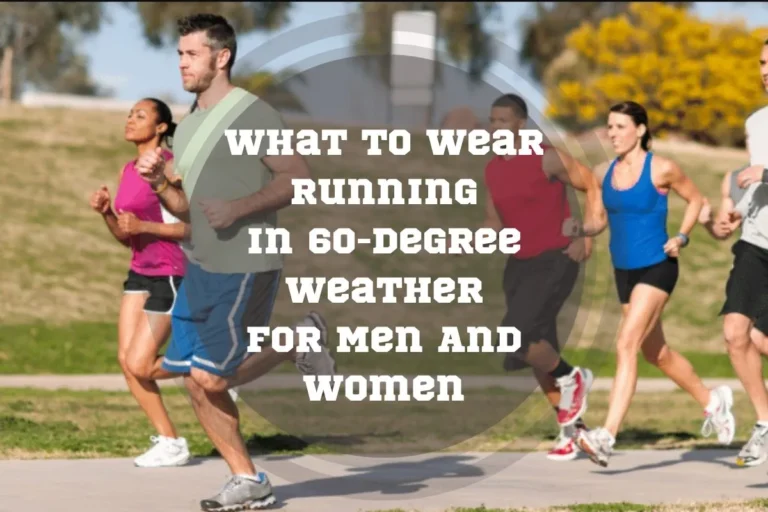5K Training Plan Advanced: 4 Strategies for Max Performance
Reviewed by: Sergii Putsov (PhD in Sport Science)
Starting to become more serious about running and thinking about pursuing a 5K training plan advanced? 5K races are a great way to challenge yourself, as they offer an intense physical and mental test. Mastering this distance can be intimidating for new runners, but by following a solid training plan tailored specifically for the advanced 5K race, it is possible to improve your pace and get the best result of your running career.
In this guide, we’ll provide strategies for upgrading from intermediate-level running to advanced speed, helping you run your best 5K ever.
What is a good 5K advanced training plan?
The 5K advanced training plan is a comprehensive, 4-week program that combines various exercises such as cross-training, strength training, interval training, long runs, and tempo runs. Strategies involved in mastering the 5K include a well-balanced diet, dynamic stretching, and mobility work.
5K Training Plan: Beginner, Intermediate, and Advanced
A 5K run is a popular race for both recreational and competitive athletes. The 5K covers kilometers, which is equivalent to 3.1 miles, around 6,000 steps, or just over 12 full laps on a 400-meter track.
The beginner 10-week 5K training plan focuses on gradually building endurance, while the intermediate plan places more emphasis on speed and stamina.
Advanced plans build upon these foundations with intense workouts designed to help experienced runners get progressively better results.
Average Running Times for 5K
Knowing the average time and pace for a 5K, based on gender and training level, can help users plan out an effective 5K training plan. The table below presents these averages:
| Training Level | Male | Female |
|---|---|---|
| Beginner | 24-28 minutes | 26-30 minutes |
| Experienced | 20-24 minutes | 22-26 minutes |
| Advanced/elite | 16-20 minutes | 18-22 minutes |
Those who are just starting out can expect to take around 45+ minutes to complete a 5K, considering that it takes a while to establish proper technique and build up endurance and speed.

Who Should You Use an Advanced 5K Training Plan?
For experienced runners looking to achieve maximum performance in the 5K distance, an advanced 5K training plan may be just what they need. To determine if this plan is suitable for you, it’s important to understand your level of fitness and running experience.
Experienced runners should have already trained consistently and had previous experience with the 5K race before starting the fast 5K training plan.
Advanced 5K Training Plan
The advanced 5K training plan is a 4-week program designed to help experienced runners optimize their performance and achieve maximum results for the 5K distance. The plan consists of various training techniques, including strength training, speed workouts, general distance runs, threshold workouts, and tempo runs.
The plan provides a detailed workout schedule that guides runners through each day of the 4 weeks, with the ultimate goal of achieving their fastest time in the 5K. Each week includes clear objectives and recommendations for the ideal workouts.
The Main Types of Training for a 5K
Runners looking to maximize their performance should focus extensively on cross-training, strength training, interval training, long runs, and tempo runs.
1. Cross-Training
Cross-training activities help to even out the load on different parts of your body. They also build strength and endurance in muscles you don’t use while running. Runners also engage in cross-training to improve flexibility, which can lead to better performance and injury prevention.

Pro Tip:
Incorporating cross-training activities like cycling or swimming into your weekly plan can make a big difference when it comes to optimizing your fitness level and performance during competition.
2. Strength Training
Strength training exercises target the muscles used in running. They build muscle endurance and muscular power to help runners run faster and more efficiently.

Pro Tip:
Examples of strength training routines include squats, lunges, calf raises, core exercises, weightlifting, circuit training, HIIT, bodyweight exercises, and resistance training.
3. Interval Training
Interval training helps build endurance, making it ideal for runners looking to maintain their intensity longer and increase their lactate threshold.
Additionally, interval training can be tailored to individual fitness levels and goals. Runners can also focus on improving form and technique during the process.
Subscribe to Our Running Newsletter!
Get free running tips from renowned professional athletes and discounts from top-notch brands.
4. Long Runs
Long runs are a core part of any 5K training plan and essential for anyone looking to race competitively. Taking time each week to cover the full race distance gives you an understanding of how long you can maintain your pace over 3 miles.

Pro Tip:
Long runs also result in noticeable improvements in running efficiency. They give runners the opportunity to form strong mental toughness that allows them to run fast for longer periods of time.
5. Tempo Runs
Tempo runs help improve runners’ endurance, stamina, and ability to sustain a faster race pace. Tempo runs involve running at a steady intensity for several minutes or miles in order to build up your aerobic base and increase your fitness level.
The goal is to become accustomed to running at a slightly faster than race pace, with the goal of sustaining that effort over longer periods of time.

Pro Tip:
A typical tempo run is running at 70-80% of your max speed for 20-40 minutes. It’s not meant to be an easy run that you can perform without any effort or fatigue.
4-Week 5K Training Plan Advanced
This plan follows a precise, 4-week schedule of intense and varied training to optimize the runner’s speed, endurance, strength, and performance during a 5K race.

Week 1
Emphasizing a solid base of endurance-building long runs, week 1 also includes two distinct types of training: cross-training and interval workouts. Easy running, such as a leisurely 4-mile run, allows athletes to build up aerobic capacity. Interval workouts consist of 4 x 400m repeats and strain the muscles, allowing them to adapt to higher speeds during longer-distance runs.
| Monday | Tuesday | Wednesday | Thursday | Friday | Saturday | Sunday |
|---|---|---|---|---|---|---|
| Rest day | Intervals | Easy pace 5-mile run | Intervals | Strength/cross-training | Easy pace 4-mile run | Long 6-mile run |
Week 2
Week 2 of the advanced 5K training plan builds on the foundation laid down in week one. The long run is extended to 6 miles, while you also add key workouts such as speed sessions and tempo runs.
Speed sessions involve 400m sprints, with long rests after each sprint ensuring optimal recovery between efforts.
| Monday | Tuesday | Wednesday | Thursday | Friday | Saturday | Sunday |
|---|---|---|---|---|---|---|
| Rest day | Sprints | Easy pace 5-mile run | Intervals | Strength/cross-training | Tempo run 4 miles | Long 7-mile run |
Week 3
The third week of the 5K speed training plan is a critical one. It refines the runner’s performance in preparation for race day. To ensure progress, this week focuses on intense workouts, such as interval runs, tempo runs, and strength and cross-training exercises.
| Monday | Tuesday | Wednesday | Thursday | Friday | Saturday | Sunday |
|---|---|---|---|---|---|---|
| Rest day | Intervals | Strength/cross-training | Intervals | Tempo run 5 miles | Easy pace 5-mile run | Long 7-mile run |
Week 4
Week 4 of the advanced 5K training plan is usually the peak week. The main emphasis of this week’s workout should be long runs and high-intensity speed workouts.
| Monday | Tuesday | Wednesday | Thursday | Friday | Saturday | Sunday |
|---|---|---|---|---|---|---|
| Rest day | Tempo run 5 miles | Easy pace 5-mile run | Intervals | Easy pace 4-mile run | Intervals | Long 8-mile run |
General Tips on How to Achieve a 5K PR
Improving your performance and achieving a 5K PR is an attainable goal. With the right strategy and dedication, you can realize your running dreams.
1. Add Mobility Work
Adding mobility work to a 4 to 6-week 5K training plan advanced offers a variety of benefits to runners that are looking to PR. Mobility work helps improve flexibility and range of motion. It allows the body to move better more efficiently during runs by increasing joint mobility and utilizing muscle activation exercises and dynamic warmups like stretching. These types of exercises can also help prevent common injuries associated with running.
2. Try Dynamic Stretching
Dynamic stretches involve moving the joints and muscles through a range of motions in order to prepare them for the physical demands of running. Dynamic stretching activities are low intensity and generally last only around 5-10 minutes, so they’re easy to incorporate into your warmup routine without consuming too much time or energy.

Pro Tip:
Examples of dynamic stretching include hip circles, arm swings, walking lunges, and butt kicks. These exercises are all designed to provide added strength and stability that will benefit you as you hit the track or trail.
3. Don’t Ignore Rest Days
Resting helps prevent injuries, correct muscle imbalances, and ensure maximum performance. After pushing your body to its physical limits during training, it’s essential to include days for recovery so you can do it again.
When you have too many consecutive days without rest or adequate sleep, muscles don’t recover and repair as effectively. This can lower endurance levels and increase fatigue rates significantly.
4. Follow Nutritional Strategy for 5K
Eating a balanced diet rich in carbohydrates, proteins and healthy fats will ensure your body gets the essential nutrition it needs to power through long runs and other workouts.
Maintaining nutritional consistency throughout training and on race day will also provide added benefits, such as improved speed, endurance, running efficiency, and mental strength – all of which are necessary for peak performance.
Frequently Asked Questions About 5K Training Plan Advanced
How Do You Pace a 5K Race?
Pacing is key to maximizing your performance in a 5K race and achieving a personal record. For experienced runners, it’s important to have a pace of around 6:30 min/mile or 4 min/km.
How Do You Run a Faster 5K?
Incorporating speed workouts, interval training, and tempo runs into a training plan are great ways to improve race times. Speed exercises on the track can help increase your race pace.
Final Thoughts on 5K Training Plan Advanced
To maximize performance in the 5K, advanced runners need to incorporate a variety of training strategies into their plan. This includes incorporating speed work and recovery days, strength training, interval runs, tempo runs, and long-distance runs.
It is important to find the right balance and focus on gradual progression rather than setting personal bests with every single run.
What is your 5k run time? Please share your experience in the comments below.
Also read:
- Best Running Insole
- Hoka vs Brooks Running Shoes
- Why Does Pickle Juice Help With Cramps
- Best Running Tank Tops
- Is a 6 Minute Mile Good
- Cross Country VS Track
- 3 Day a Week Running Plan
- Running With Sciatica
- Best Trail Running Poles
References:
- Factors Affecting Training and Physical Performance in Recreational Endurance Runners // MDPI: https://www.mdpi.com/2075-4663/8/3/35
- Effects of specific versus cross-training on running performance // ResearchGate: https://www.researchgate.net/publication/15550305_Effects_of_specific_versus_cross-training_on_running_performance
- Effects of Strength Training on Running Economy in Highly Trained Runners: A Systematic Review With Meta-Analysis of Controlled Trials // The Journal of Strength & Conditioning Research: https://journals.lww.com/nsca-jscr/Fulltext/2016/08000/Effects_of_Strength_Training_on_Running_Economy_in.36.aspx
- The Sleep and Recovery Practices of Athletes // MDPI: https://www.mdpi.com/2072-6643/13/4/1330
- The effects of training with high‐speed interval running on muscle performance are modulated by slope // PMC: https://www.ncbi.nlm.nih.gov/pmc/articles/PMC7785049/
If you have any questions or suggestions, you can contact us via email – [email protected]






